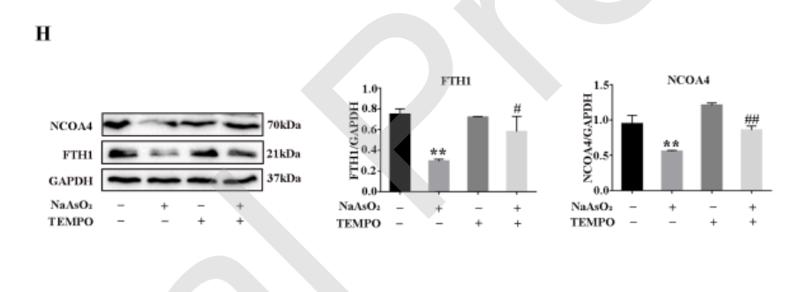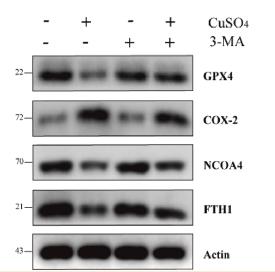NCOA4 Antibody - #DF4255
| Product: | NCOA4 Antibody |
| Catalog: | DF4255 |
| Description: | Rabbit polyclonal antibody to NCOA4 |
| Application: | WB IHC IF/ICC |
| Reactivity: | Human, Mouse, Rat |
| Mol.Wt.: | 70~90KD; 70kD(Calculated). |
| Uniprot: | Q13772 |
| RRID: | AB_2836606 |
Related Downloads
Protocols
Product Info
*The optimal dilutions should be determined by the end user.
*Tips:
WB: For western blot detection of denatured protein samples. IHC: For immunohistochemical detection of paraffin sections (IHC-p) or frozen sections (IHC-f) of tissue samples. IF/ICC: For immunofluorescence detection of cell samples. ELISA(peptide): For ELISA detection of antigenic peptide.
Cite Format: Affinity Biosciences Cat# DF4255, RRID:AB_2836606.
Fold/Unfold
70 kDa androgen receptor activator; 70 kDa androgen receptor coactivator; 70 kDa AR activator; 70 kDa AR-activator; Androgen receptor coactivator 70 kD; Androgen receptor coactivator 70 kDa protein; Androgen receptor-associated protein of 70 kDa; ARA 70; ARA70; DKFZp762E1112; ELE 1; ELE1; ELE1/ret TK; NCOA 4; NCoA-4; NCOA4; NCOA4_HUMAN; Nuclear receptor coactivator 4; Papillary thyroid carcinoma 3; PTC 3; PTC3; RET activating gene ELE1; Ret activating protein ELE1; Ret-activating protein ELE1; RFG;
Immunogens
Widely expressed. Also detected in adipose tissues and in different cell lines. Isoform Beta is only expressed in testis.
- Q13772 NCOA4_HUMAN:
- Protein BLAST With
- NCBI/
- ExPASy/
- Uniprot
MNTFQDQSGSSSNREPLLRCSDARRDLELAIGGVLRAEQQIKDNLREVKAQIHSCISRHLECLRSREVWLYEQVDLIYQLKEETLQQQAQQLYSLLGQFNCLTHQLECTQNKDLANQVSVCLERLGSLTLKPEDSTVLLFEADTITLRQTITTFGSLKTIQIPEHLMAHASSANIGPFLEKRGCISMPEQKSASGIVAVPFSEWLLGSKPASGYQAPYIPSTDPQDWLTQKQTLENSQTSSRACNFFNNVGGNLKGLENWLLKSEKSSYQKCNSHSTTSSFSIEMEKVGDQELPDQDEMDLSDWLVTPQESHKLRKPENGSRETSEKFKLLFQSYNVNDWLVKTDSCTNCQGNQPKGVEIENLGNLKCLNDHLEAKKPLSTPSMVTEDWLVQNHQDPCKVEEVCRANEPCTSFAECVCDENCEKEALYKWLLKKEGKDKNGMPVEPKPEPEKHKDSLNMWLCPRKEVIEQTKAPKAMTPSRIADSFQVIKNSPLSEWLIRPPYKEGSPKEVPGTEDRAGKQKFKSPMNTSWCSFNTADWVLPGKKMGNLSQLSSGEDKWLLRKKAQEVLLNSPLQEEHNFPPDHYGLPAVCDLFACMQLKVDKEKWLYRTPLQM
PTMs - Q13772 As Substrate
| Site | PTM Type | Enzyme | Source |
|---|---|---|---|
| K42 | Ubiquitination | Uniprot | |
| K49 | Ubiquitination | Uniprot | |
| S57 | Phosphorylation | Uniprot | |
| S156 | Phosphorylation | Uniprot | |
| S171 | Phosphorylation | Uniprot | |
| S172 | Phosphorylation | Uniprot | |
| K181 | Ubiquitination | Uniprot | |
| S186 | Phosphorylation | Uniprot | |
| S194 | Phosphorylation | Uniprot | |
| K209 | Ubiquitination | Uniprot | |
| S212 | Phosphorylation | Uniprot | |
| K231 | Ubiquitination | Uniprot | |
| S237 | Phosphorylation | Uniprot | |
| S240 | Phosphorylation | Uniprot | |
| S241 | Phosphorylation | Uniprot | |
| K255 | Ubiquitination | Uniprot | |
| K263 | Ubiquitination | Uniprot | |
| K266 | Ubiquitination | Uniprot | |
| K271 | Ubiquitination | Uniprot | |
| T307 | Phosphorylation | Uniprot | |
| K313 | Ubiquitination | Uniprot | |
| K316 | Ubiquitination | Uniprot | |
| S334 | Phosphorylation | Uniprot | |
| K356 | Ubiquitination | Uniprot | |
| K367 | Ubiquitination | Uniprot | |
| K377 | Ubiquitination | Uniprot | |
| S412 | Phosphorylation | Uniprot | |
| K424 | Ubiquitination | Uniprot | |
| K429 | Ubiquitination | Uniprot | |
| K439 | Ubiquitination | Uniprot | |
| K447 | Ubiquitination | Uniprot | |
| K454 | Ubiquitination | Uniprot | |
| S456 | Phosphorylation | Uniprot | |
| K465 | Ubiquitination | Uniprot | |
| K472 | Ubiquitination | Uniprot | |
| K475 | Ubiquitination | Uniprot | |
| K490 | Ubiquitination | Uniprot | |
| S492 | Phosphorylation | Uniprot | |
| K504 | Ubiquitination | Uniprot | |
| S507 | Phosphorylation | Uniprot | |
| K509 | Ubiquitination | Uniprot | |
| K544 | Ubiquitination | Uniprot | |
| K545 | Ubiquitination | Uniprot | |
| S553 | Phosphorylation | Uniprot | |
| S554 | Phosphorylation | Uniprot | |
| K558 | Ubiquitination | Uniprot |
Research Backgrounds
Enhances the androgen receptor transcriptional activity in prostate cancer cells. Ligand-independent coactivator of the peroxisome proliferator-activated receptor (PPAR) gamma.
Widely expressed. Also detected in adipose tissues and in different cell lines. Isoform Beta is only expressed in testis.
Interacts with the androgen receptor and the retinoid X receptor (RXR) in a ligand-dependent manner.
Research Fields
· Cellular Processes > Cell growth and death > Ferroptosis. (View pathway)
· Human Diseases > Cancers: Overview > Pathways in cancer. (View pathway)
· Human Diseases > Cancers: Specific types > Thyroid cancer. (View pathway)
References
Application: WB Species: Rat Sample: MIN6 cells
Application: WB Species: Mouse Sample: GC-1 spg cells
Application: WB Species: Mice Sample: MLE-12 cells.
Restrictive clause
Affinity Biosciences tests all products strictly. Citations are provided as a resource for additional applications that have not been validated by Affinity Biosciences. Please choose the appropriate format for each application and consult Materials and Methods sections for additional details about the use of any product in these publications.
For Research Use Only.
Not for use in diagnostic or therapeutic procedures. Not for resale. Not for distribution without written consent. Affinity Biosciences will not be held responsible for patent infringement or other violations that may occur with the use of our products. Affinity Biosciences, Affinity Biosciences Logo and all other trademarks are the property of Affinity Biosciences LTD.



